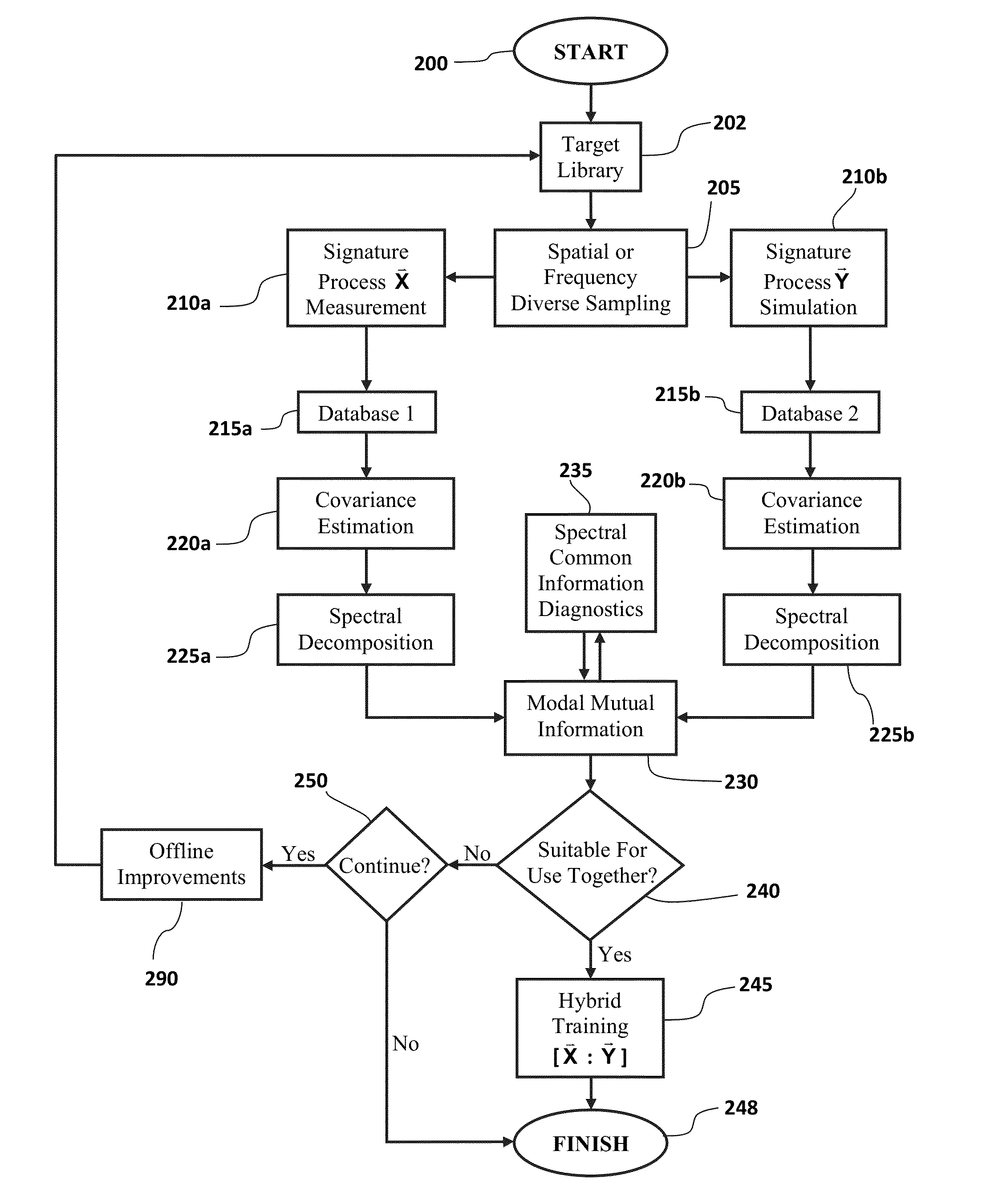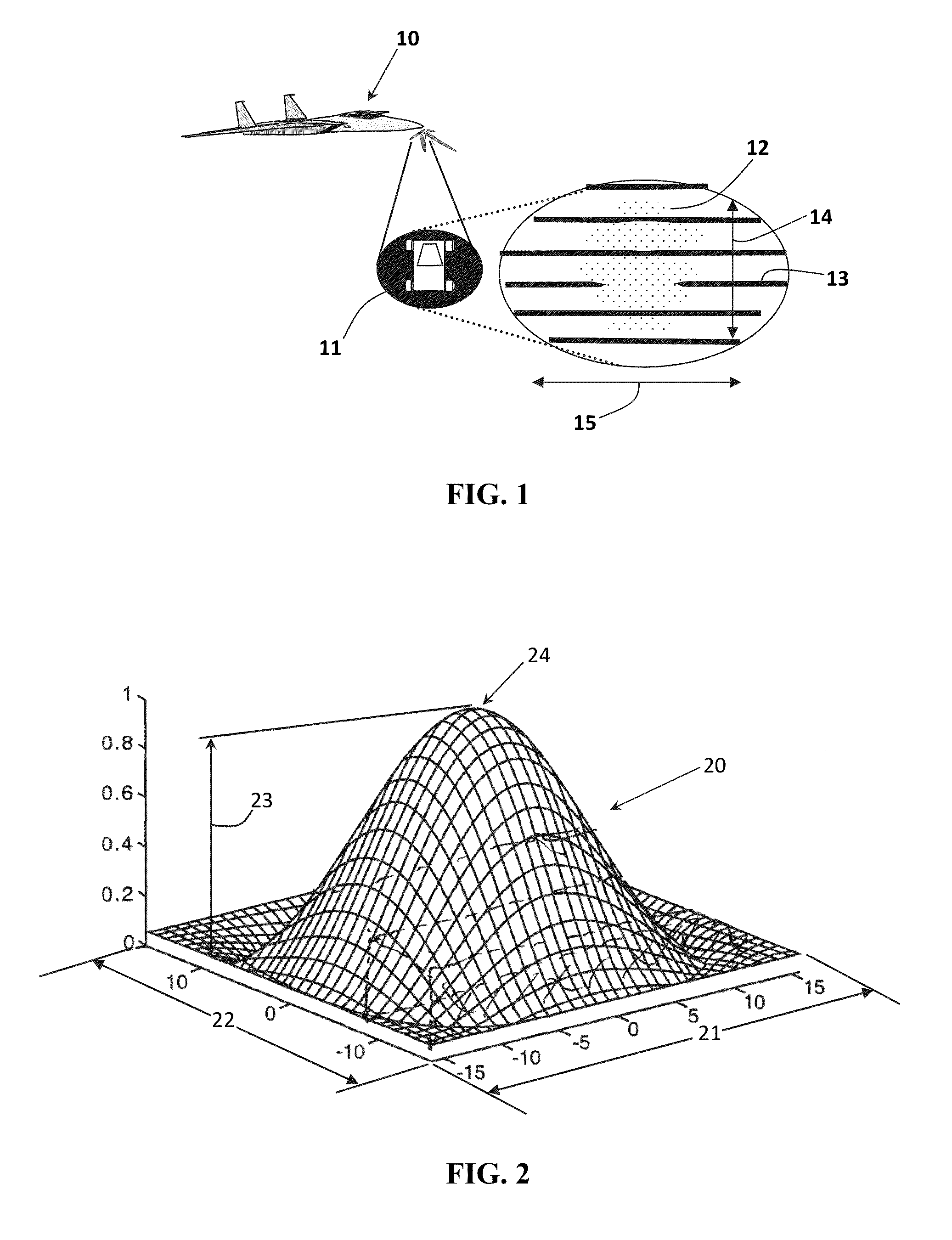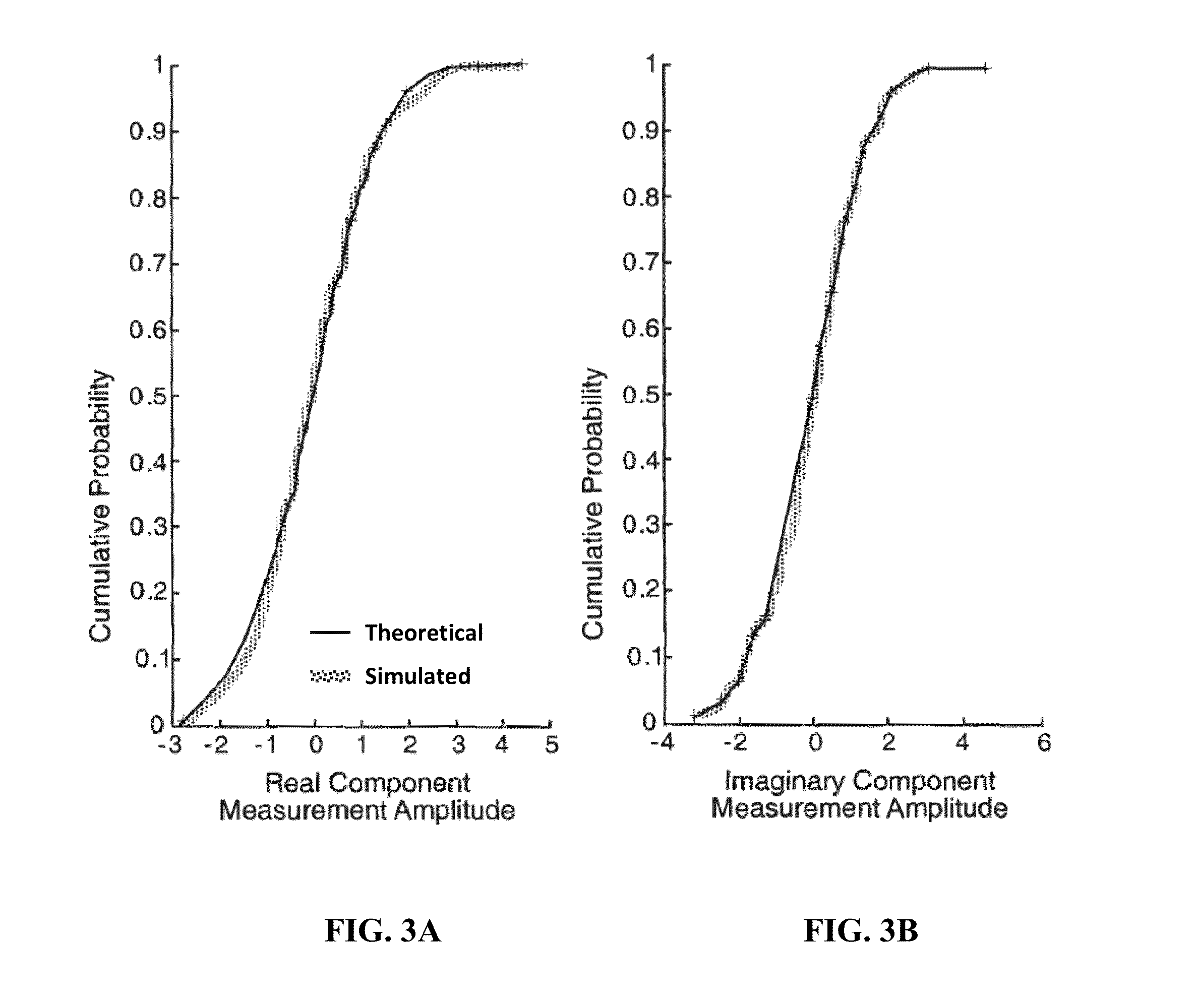Radar signature database validation for automatic target recognition
a technology of automatic target recognition and signature database, applied in the field ofradar signature analysis, can solve the problems of difficult computation of signatures with sufficient accuracy, difficult validation, and inability to meet the requirements of target recognition algorithms,
- Summary
- Abstract
- Description
- Claims
- Application Information
AI Technical Summary
Benefits of technology
Problems solved by technology
Method used
Image
Examples
example 1
BTR-70 Vs. BMP2 (Out-of-Class Variations)
[0148]Example 1, which corresponds to case-1 and case-2 of Table 1, pertains to two targets (BTR-70 and BMP2) drawn from two different target classes. The mutual information between the signatures of dissimilar targets would be expected to be low as these signatures would be statistically independent. In FIG. 8, the MMI for the ‘out-of-class’ target case yields consistently low mutual information across the modes, and the total mutual information is also quite low at approximately 0.4 Nats. Confirming expectations, this low value of mutual information is consistent with the degree of statistical independence to be expected when the signature processes of two very dissimilar scattering sources (targets) are compared.
[0149]In the case-2 experiment of Table 1, the previous experiment is extended to conditions where current classification algorithm approaches (those based on geometric measure) indicate that the two targets drawn from two differen...
example 2
BTR-70 (In-Class Variations)
[0150]Example 2 corresponds to case-3 and case-4 in Table 1. Two targets from the same class are often similar but not identical. The physical differences can be minor or quite striking A number of experiments pertaining to the MMI and cumulative MI of in-class targets with different degrees of variations are considered. Case-3 of Table 1 corresponds to the signatures of the BTR-70 with and without the PEC ground plane representing a “minor” difference. For this case, the mutual information is expected to be high and is so demonstrated by the results shown in FIG. 10, with the cumulative MI at 10.5 Nats. FIG. 10 shows MMI and cumulative MI for BTR-70 with ground plane & BTR-70 without ground plane, a similar target case.
[0151]The target signature may be considered to be the sum of scattering from a collection of scattering centers. Variations in target and signatures, ranging from “marginal” to “major,” can be simulated by including or excluding chosen gr...
example 3
T-72 (In-Class Variations)
[0153]Example 3 corresponds to case-5 in Table 1. In-class variations from the baseline geometry may be obtained by removing certain physical features, and an effort is made to ensure that the scattering from these features is “persistent” over the whole target aspect angle window. The T-72 tank is used as the baseline target in the experiments designated as case-5 in Table 1 with three specific geometry components identified for study. The geometry components identified are the forward fenders, rear fuel barrels, and the gun barrel. The scattering from the front fender is eliminated, and FIGS. 12A and 12B illustrate the two dimensional image of the T-72 tank with and without the fender scattering. The reduction in resolved signal power within the cells associated with this geometry indicates the significant effect of eliminating the fender scattering. The results of this first of these sub-experiments are presented in FIG. 13 where the MMI is computed for ...
PUM
 Login to View More
Login to View More Abstract
Description
Claims
Application Information
 Login to View More
Login to View More - R&D
- Intellectual Property
- Life Sciences
- Materials
- Tech Scout
- Unparalleled Data Quality
- Higher Quality Content
- 60% Fewer Hallucinations
Browse by: Latest US Patents, China's latest patents, Technical Efficacy Thesaurus, Application Domain, Technology Topic, Popular Technical Reports.
© 2025 PatSnap. All rights reserved.Legal|Privacy policy|Modern Slavery Act Transparency Statement|Sitemap|About US| Contact US: help@patsnap.com



